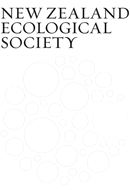Spatial distribution of probable ship rat reinvaders in a pest-fenced ecosanctuary
Managers of ecosanctuaries often need to make decisions in the face of uncertainty. Model-based tools which aim to assist this process, for example proof-of-absence models, are underpinned by assumptions about the behaviour of target animals, including their spatial movements. In some cases, however, there are few empirical data to draw on to inform these models. The movement behaviour of individual pests in low-density environments, as well as the dispersal of juveniles away from their natal location, is poorly understood for many species, including the ship rat (Rattus rattus).
